We use cookies to make your experience better.
To comply with the new e-Privacy directive, you agree to the privacy policy and our use of cookies.
Intel 300 processor 6 MB Smart Cache Box
SKU
BX80715300
| Processor socket | LGA 1700 |
|---|---|
| Box | Yes |
| Processor cores | 2 |
| Processor family | Intel Processor 300 |
| SKU | BX80715300 |
| EAN | 5032037279116 |
| Manufacturer | Intel |
| Availability | In Stock |
Discover the Versatility of Intel Raptor Lake Processor 300
Seeking a processor that combines power and efficiency? Look no further than the Intel Raptor Lake Processor 300. With its cutting-edge features and innovative design, this processor sets a new standard for computing performance.
Unleash the Power
The Intel Raptor Lake Processor 300 features a dual-core configuration, offering a balance of performance and efficiency. With a maximum clock speed of 3.9GHz and support for up to 4 threads, this processor delivers smooth multitasking and responsive performance for a variety of computing tasks.
| Processor | |
|---|---|
| Processor manufacturer | Intel |
| Cooler included | Yes |
| Processor codename | Raptor Lake |
| Memory bandwidth supported by processor (max) | 76.8 GB/s |
| Processor cache | 6 MB |
| Processor ARK ID | 236846 |
| Processor model | 300 |
| Processor threads | 4 |
| Processor operating modes | 64-bit |
| Stepping | H0 |
| Processor family | Intel Processor 300 |
| Processor cores | 2 |
| Box | Yes |
| Processor socket | LGA 1700 |
| Processor cache type | Smart Cache |
| Performance cores | 2 |
| Efficient cores | 0 |
| Performance-core base frequency | 3.9 GHz |
| Processor base power | 46 W |
| Maximum number of DMI lanes | 8 |
| Memory | |
| Maximum internal memory supported by processor | 192 GB |
| Memory types supported by processor | DDR4-SDRAM, DDR5-SDRAM |
| Memory bandwidth supported by processor (max) | 76.8 GB/s |
| Memory channels | Dual-channel |
| Memory bandwidth (max) | 76.8 GB/s |
| Graphics | |
| Discrete graphics card | No |
| On-board graphics card outputs supported | Embedded DisplayPort (eDP) 1.4b, DisplayPort 1.4a, HDMI 2.1 |
| On-board graphics card maximum resolution (DisplayPort) | 7680 x 4320 pixels |
| Number of execution units | 16 |
| On-board graphics card ID | 0x4693 |
| On-board graphics card maximum resolution (eDP - Integrated Flat Panel) | 5120 x 3200 pixels |
| On-board graphics card refresh rate at maximum resolution (HDMI) | 60 Hz |
| On-board graphics card refresh rate at maximum resolution (DisplayPort) | 60 Hz |
| On-board graphics card refresh rate at maximum resolution (eDP - Integrated Flat Panel) | 120 Hz |
| Number of displays supported (on-board graphics) | 4 |
| On-board graphics card maximum resolution (HDMI) | 4096 x 2160 pixels |
| On-board graphics card DirectX version | 12.0 |
| On-board graphics card OpenGL version | 4.5 |
| On-board graphics card model | Intel UHD Graphics 710 |
| On-board graphics card | Yes |
| On-board graphics card dynamic frequency (max) | 1450 MHz |
| On-board graphics card base frequency | 300 MHz |
| Discrete graphics card model | Not available |
| Multi-Format Codec Engines | 1 |
| Technical details | |
| Thermal solution specification | PCG 2020C |
| Intel® Secure Key | Yes |
| Thermal Monitoring Technologies | Yes |
| Intel® Quick Sync Video Technology | Yes |
| Intel® Hyper Threading Technology (Intel® HT Technology) | Yes |
| Intel® Clear Video HD Technology (Intel® CVT HD) | Yes |
| Intel® AES New Instructions (Intel® AES-NI) | Yes |
| Idle States | Yes |
| Execute Disable Bit | Yes |
| Enhanced Intel SpeedStep Technology | Yes |
| PCI Express slots version | 4.0, 5.0 |
| PCI Express configurations | 1x16+1x4, 2x8+1x4 |
| Supported instruction sets | AVX 2.0, SSE4.1, SSE4.2 |
| Scalability | 1S |
| L2 cache | 2560 KB |
| Intel VT-x with Extended Page Tables (EPT) | Yes |
| Embedded options available | No |
| CPU configuration (max) | 1 |
| Graphics output | eDP 1.4b, DP 1.4a, HDMI 2.1 |
| Intel Virtualization Technology for Directed I/O (VT-d) | Yes |
| Intel 64 | Yes |
| Status | Launched |
| Market segment | Desktop |
| Launch date | Q1'24 |
| Intel Virtualization Technology (VT-x) | Yes |
| Processor cache type | Smart Cache |
| OpenCL version | 3.0 |
| Features | |
| On-board graphics card ID | 0x4693 |
| Maximum number of PCI Express lanes | 20 |
| Processor package size | 45 x 37.5 mm |
| Processor ARK ID | 236846 |
| Thermal solution specification | PCG 2020C |
| Thermal Monitoring Technologies | Yes |
| Idle States | Yes |
| Execute Disable Bit | Yes |
| PCI Express slots version | 4.0, 5.0 |
| PCI Express configurations | 1x16+1x4, 2x8+1x4 |
| Supported instruction sets | AVX 2.0, SSE4.1, SSE4.2 |
| Scalability | 1S |
| Embedded options available | No |
| CPU configuration (max) | 1 |
| Market segment | Desktop |
| Harmonized System (HS) code | 8542310001 |
| Export Control Classification Number (ECCN) | 5A992C |
| Commodity Classification Automated Tracking System (CCATS) | 740.17B1 |
| Use conditions | PC/Client/Tablet |
| Direct Media Interface (DMI) Revision | 4.0 |
| Processor special features | |
|---|---|
| Intel Virtualization Technology for Directed I/O (VT-d) | Yes |
| Intel 64 | Yes |
| Intel® Speed Shift Technology | Yes |
| Intel® OS Guard | Yes |
| Intel® Secure Key | Yes |
| Intel® Quick Sync Video Technology | Yes |
| Intel® Hyper Threading Technology (Intel® HT Technology) | Yes |
| Intel® Clear Video HD Technology (Intel® CVT HD) | Yes |
| Intel® AES New Instructions (Intel® AES-NI) | Yes |
| Enhanced Intel SpeedStep Technology | Yes |
| Intel VT-x with Extended Page Tables (EPT) | Yes |
| Intel Virtualization Technology (VT-x) | Yes |
| Intel® Boot Guard | Yes |
| Intel® Volume Management Device (VMD) | Yes |
| Intel® Deep Learning Boost (Intel® DL Boost) on CPU | Yes |
| Mode-based Execute Control (MBE) | Yes |
| Intel® Control-flow Enforcement Technology (CET) | Yes |
| Intel® Thread Director | No |
| Intel® Gaussian & Neural Accelerator (Intel® GNA) 3.0 | Yes |
| Intel® Standard Manageability (ISM) | Yes |
| Operational conditions | |
| Tjunction | 100 °C |
| Logistics data | |
| Harmonized System (HS) code | 8542310001 |
| Weight & dimensions | |
| Processor package size | 45 x 37.5 mm |
| Other features | |
| Maximum internal memory | 192 GB |
| L2 cache | 2560 KB |
| CPU configuration (max) | 1 |
| Graphics output | eDP 1.4b, DP 1.4a, HDMI 2.1 |
You may also be interested in
| Product |
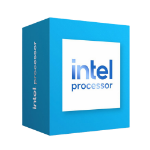 Intel 300 processor 6 MB Smart Cache Box
Login for pricing
Intel 300 processor 6 MB Smart Cache Box
Login for pricing
|
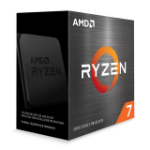
Bestseller
AMD Ryzen 7 5800X processor 3.8 GHz 32...
Login for pricing
|
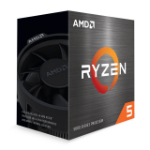
Popular
AMD Ryzen 5 5600X processor 3.7 GHz 32...
Login for pricing
|
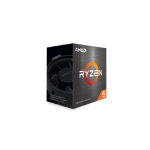
Recommended
AMD Ryzen 5 5600G processor 3.9 GHz 16...
Login for pricing
|

Hot Product
AMD Ryzen 7 5700G processor 3.8 GHz 16...
Login for pricing
|
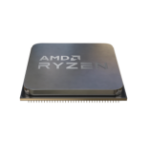 AMD Ryzen 5 5600G processor 3.9 GHz 16...
Login for pricing
AMD Ryzen 5 5600G processor 3.9 GHz 16...
Login for pricing
|
|---|---|---|---|---|---|---|
| SKU |
BX80715300
|
100-100000063WOF
|
100-100000065BOX
|
100-100000252BOX
|
100-100000263BOX
|
100-000000252
|
| Manufacturer |
Intel
|
AMD
|
AMD
|
AMD
|
AMD
|
AMD
|
| Processor lithography |
N/A
|
up to 22nm
|
up to 22nm
|
up to 22nm
|
up to 22nm
|
up to 22nm
|
| Processor family |
Intel Processor 300
|
AMD Ryzen 7
|
AMD Ryzen 5
|
AMD Ryzen 5
|
AMD Ryzen 7
|
AMD Ryzen 5
|
| Processor socket |
LGA 1700
|
Socket AM4
|
Socket AM4
|
Socket AM4
|
Socket AM4
|
Socket AM4
|
| Processor cores |
2
|
8
|
6
|
6
|
8
|
6
|
| On-board graphics card |
Y
|
N
|
N
|
Y
|
Y
|
Y
|
| Discrete graphics card |
N
|
N
|
N
|
N
|
N
|
N/A
|
| Cooler included |
Y
|
N
|
Y
|
Y
|
Y
|
N
|



